THE LIFE OF THE BUDDHA
|
Answer. The Buddhist.
2. Q. What is Buddhism?
A. It is a body of teachings given out by the great personage known as the Buddha.
3. Q. Is "Buddhism" the best name for this teaching?
A. No; that is only a western term: the best name for it is Bauddha Dharma.
4. Q. Would you call a person a Buddhist who had merely been born of Buddha parents?
A. Certainly not. A Buddhist is one who not only professes belief in the Buddha as the noblest of Teachers, in the Doctrine preached by Him, and in the Brotherhood of Arhats, but practises His precepts in daily life.
5. Q. What is a male lay Buddhist called?
A. An Upāsaka.
6. Q. What a female?
A. An Upāsika.
7. Q. When was this doctrine first preached?
A. There is some disagreement as to the actual date, but according to the Sinhalese Scriptures it was in the year 2513 of the (present) Kali-Yuga.
8. Q. Give the important dates in the last birth of the Founder?
A. He was born under the constellation Visā on a Tuesday in May, in the year 2478 (K.Y.); he retired to the jungle in the year 2506; became Buddha in 2513; and, passing out of the round of rebirths, entered Paranirvāna in the year 2558, aged eighty years. Each of these events happened on a day of full moon, so all are conjointly celebrated in the great festival of the full-moon of the month Wesak (Vaisākha), corresponding to the month of May.
9. Q. Was the Buddha God?
A. No. Buddha Dharma teaches no "divine" incarnation.
10. Q. Was he a man?
A. Yes; but the wisest, noblest and most holy being, who had developed himself in the course of countless births far beyond all other beings, the previous BUDDHAS alone excepted.
11. Q. Were there other Buddhas before him?
A. Yes; as will be explained later on.
12. Q. Was Buddha his name?
A. No. It is the name of a condition or state of mind, of the mind after it has reached the culmination of development.
13. Q. What is its meaning?
A. Enlightened; or, he who has the all-perfect wisdom. The Pālī phrase is Sabbannu, the One of Boundless Knowledge. In Samskrt it is Sarvajña.
14. Q. What was the Buddha's real name then?
A. SIDDHĀRTHA was his royal name, and GAUTAMA, or GOTAMA, his family name. He was Prince of Kapilavāstu and belonged to the illustrious family of the Okkāka, of the Solar race.
15. Q. Who were his father and mother?
A. King Suddhodana and Queen Māyā, called Mahā Māyā.
16. Q. What people did this King reign over?
A. The Sākyas; an Aryan tribe of Kshattriyas.
17. Q. Where was Kapilavāstu?
A. In India, one hundred miles north-east of the City of Benares, and about forty miles from the Himalaya mountains. It is situated in the Nepāl Terai. The city is now in ruins.
18. Q. On what river?
A. The Rohīnī, now called the Kohana.
19. Q. Tell me again when Prince Siddhārtha was born?
A. Six hundred and twenty-three years before the Christian era.
20. Q. Is the exact spot known?
A. It is now identified beyond question. An archaeologist in the service of the Government of India has discovered in the jungle of the Nepāl Terai a stone pillar erected by the mighty Buddhist sovereign, Asoka, to mark the very spot. The place was known in those times as the Lumbinī Garden.
21. Q. Had the Prince luxuries and splendours like other Princes?
A. He had; his father, the King, built him three magnificent palaces—for the three Indian seasons—the cold, the hot, and the rainy—of nine, five, and three stories respectively, and handsomely decorated.
22. Q. How were they situated?
A. Around each palace were gardens of the most beautiful and fragrant flowers, with fountains of spouting water, the trees full of singing birds, and peacocks strutting over the ground.
23. Q. Was he living alone?
A. No; in his sixteenth year he was married to the Princess Yasodharā, daughter of the King Suprabuddha. Many beautiful maidens, skilled in dancing and music, were also in continual attendance to amuse him.
24. Q. How did he get his wife?
A. In the ancient Kshattriya or warrior fashion, by overcoming all competitors in games and exercises of skill and prowess, and then selecting Yasodharā out of all the young princesses, whose fathers had brought them to the tournament or mela.
25. Q. How, amid all this luxury, could a Prince become all-wise?
A. He had such natural wisdom that when but a child he seemed to understand all arts and sciences almost without study. He had the best teachers, but they could teach him nothing that he did not seem to comprehend immediately.
26. Q. Did he become Buddha in his splendid palaces?
A. No. He left all and went alone into the jungle.
27. Q. Why did he do this?
A. To discover the cause of our sufferings and the way to escape from them.
28. Q. Was it not selfishness that made him do this?
A. No; it was boundless love for all beings that made him devote himself to their good.
29. Q. But how did he acquire this boundless love?
A. Throughout numberless births and aeons of years he had been cultivating this love, with the unfaltering determination to become a Buddha.
30. Q. What did he this time relinquish?
A. His beautiful palaces, his riches, luxuries and pleasures, his soft beds, fine dresses, rich food, and his kingdom; he even left his beloved wife and only son, Rāhula.
31. Q. Did any other man ever sacrifice so much for our sake?
A. Not one in this present world-period: this is why Buddhists so love him, and why good Buddhists try to be like him.
32. Q. But have not many men given up all earthly blessings, and even life itself, for the sake of their fellow-men?
A. Certainly. But we believe that this surpassing unselfishness and love for humanity showed themselves in his renouncing the bliss of Nirvāna countless ages ago, when he was born as the Brāhmana Sumedha, in the time of Dīpānkara Buddha: he had then reached the stage where he might have entered Nirvāna, had he not loved mankind more than himself. This renunciation implied his voluntarily enduring the miseries of earthly lives until he became Buddha, for the sake of teaching all beings the way to emancipation and to give rest to the world.
33. Q. How old was he when he went to the jungle?
A. He was in his twenty-ninth year.
34. Q. What finally determined him to leave all that men usually love so much and go to the jungle?
A. A Deva[2] appeared to him when driving out in his chariot, under four impressive forms, on four different occasions.
35. Q. What were these different forms?
A. Those of a very old man broken down by age, of a sick man, of a decaying corpse, and of a dignified hermit.
36. Q. Did he alone see these?
A. No, his attendant, Channa, also saw them.
37. Q. Why should these sights, so familiar to everybody, have caused him to go to the jungle?
A. We often see such sights: he had not seen them, so they made a deep impression on his mind.
38. Q. Why had he not also seen them?
A. The Brāhmana astrologers had foretold at his birth that he would one day resign his kingdom and, become a BUDDHA. The King, his father, not wishing to lose an heir to his kingdom, had carefully prevented his seeing any sights that might suggest to him human misery and death. No one was allowed even to speak of such things to the Prince. He was almost like a prisoner in his lovely palaces and flower gardens. They were surrounded by high walls, and inside everything was made as beautiful as possible, so that he might not wish to go and see the sorrow and distress that are in the world.
39. Q. Was he so kind-hearted that the King feared he might really wish to leave everything for the world's sake?
A. Yes; he seems to have felt for all beings so strong a pity and love as that.
40. Q. And how did he expect to learn the cause of sorrow in the jungle?
A. By removing far away from all that could prevent his thinking deeply of the causes of sorrow and the nature of man.
41. Q. How did he escape from the palace?
A. One night, when all were asleep, he arose, took a last look at his sleeping wife and infant son; called Channa, mounted his favourite white horse Kanthaka, and rode to the palace gate. The Devas had thrown a deep sleep upon the King's guard who watched the gate, so that they could not hear the noise of the horse's hoofs.
42. Q. But the gate was locked, was it not?
A. Yes; but the Devas caused it to open without the slightest noise, and he rode away into the darkness.
43. Q. Whither did he go?
A. To the river Anomā, a long way from Kapilavāstu.
44. Q. What did he then do?
A. He sprang from his horse, cut off his beautiful hair with his sword, put on the yellow dress of an ascetic, and giving his ornaments and horse to Channa, ordered him to take them back to his father, the King.
45. Q. What then?
A. He went afoot towards Rājagrha, the capital city of King Bimbisāra, of Magadha.
46. Q. Who visited him there?
A. The King with his whole Court.[3]
46a. Q. Thence whither did he go?
A. To Uruvela, near the present Mahābōdhi Temple at Buddha Gayā.
47. Q. Why did he go there?
A. In the forests were hermits—very wise men, whose pupil he afterwards became, in the hope of finding the knowledge of which he was in search.
48. Q. Of what religion were they?
A. The Hindu religion: they were Brāhmanas.[4]
49. Q. What did they teach?
A. That by severe penances and torture of the body a man may acquire perfect wisdom.
50. Q. Did the Prince find this to be so?
A. No; he learned their systems and practised all their penances, but he could not thus discover the cause of human sorrow and the way to absolute emancipation.
51. Q. What did he then do?
A. He went away into the forest near Uruvela, and spent six years in deep meditation, undergoing the severest discipline in mortifying his body.
52. Q. Was he alone?
A. No; five Brāhman companions attended him.
53. Q. What were their names?
A. Kondañña, Bhaddiya, Vappa, Mahānāma, and Assaji.
54. Q. What plan of discipline did he adopt to open his mind to know the whole truth?
A. He sat and meditated, concentrating his mind upon the higher problems of life, and shutting out from his sight and hearing all that was likely to interrupt his inward reflections.
55. Q. Did he fast?
A. Yes, through the whole period. He took less and less food and water until, it is said, he ate scarcely more than one grain of rice or of sesamum seed each day.
56. Q. Did this give him the wisdom he longed for?
A. No. He grew thinner and thinner in body and fainter in strength until, one day, as he was slowly walking about and meditating, his vital force suddenly left him and he fell to the ground unconscious.
57. Q. What did his companions think of that?
A. They fancied he was dead; but after a time he revived.
58. Q. What then?
A. The thought came to him that knowledge could never be reached by mere fasting or bodily suffering, but must be gained by the opening of the mind. He had just barely escaped death from self-starvation, yet had not obtained the Perfect Wisdom. So he decided to eat, that he might live at least long enough to become wise.
59. Q. Who gave him food?
A. He received food from Sujatā, a nobleman's daughter, who saw him sitting at the foot of a nyagrodha (banyan) tree. He arose, took his alms-bowl, bathed in the river Nerañjāra, ate the food, and went into the jungle.
60. Q. What did he do there?
A. Having formed his determination after these reflections, he went at evening to the Bōdhi, or Asvattha tree, where the present Mahābōdhi Temple stands.
61. Q. What did he do there?
A. He determined not to leave the spot until he attained perfect wisdom.
62. Q. At which side of the tree did he seat himself?
A. The side facing the east.[5]
63. Q. What did he obtain that night?
A. The knowledge of his previous births, of the causes of rebirths, and of the way to extinguish desires. Just before the break of the next day his mind was entirely opened, like the full-blown lotus flower; the light of supreme knowledge, or the Four Truths, poured in upon him. He had become BUDDHA—the Enlightened, the all-knowing—the Sarvajña.
64. Q. Had he at last discovered the cause of human misery?
A. At last he had. As the light of the morning sun chases away the darkness of night, and reveals to sight the trees, fields, rocks, seas, rivers, animals, men and all things, so the full light of knowledge rose in his mind, and he saw at one glance the causes of human suffering and the way to escape from them.
65. Q. Had he great struggles before gaining this perfect wisdom?
A. Yes, mighty and terrible struggles. He had to conquer in his body all those natural defects and human appetites and desires that prevent our seeing the truth. He had to overcome all the bad influences of the sinful world around him. Like a soldier fighting desperately in battle against many enemies, he struggled: like a hero who conquers, he gained his object, and the secret of human misery was discovered.
66. Q. What use did he make of the knowledge thus gained?
A. At first he was reluctant to teach it to the people at large.
67. Q. Why?
A. Because of its profound importance and sublimity. He feared that but few people would understand it.
68. Q. What made him alter this view?[6]
A. He saw that it was his duty to teach what he had learnt as clearly and simply as possible, and trust to the truth impressing itself upon the popular mind in proportion to each one's individual Karma. It was the only way of salvation, and every being had an equal right to have it pointed out to him. So he determined to begin with his five late companions, who had abandoned him when he broke his fast.
69. Q. Where did he find them?
A. In the deer-park at Isipatana, near Benares.
70. Q. Can the spot be now identified?
A. Yes, a partly ruined stūpa, or dagoba, is still standing on that very spot.
71. Q. Did those five companions readily listen to him?
A. At first, no; but so great was the spiritual beauty of his appearance, so sweet and convincing his teaching, that they soon turned and gave him the closest attention.
72. Q. What effect did this discourse have upon them?
A. The aged Kondañña, one who "understood" (Anna), was the first to lose his prejudices, accept the Buddha's teaching, become his disciple, and enter the Path leading to Arhatship. The other four soon followed his example.
73. Q. Who were his next converts?
A. A rich young layman, named Yasa, and his father, a wealthy merchant. By the end of three months the disciples numbered sixty persons.
74. Q. Who were the first women lay disciples?
A. The mother and wife of Yasa.
75. Q. What did the Buddha do at that time?[7]
A. He called the disciples together, gave them full instructions, and sent them out in all directions to preach his doctrine.
76. Q. What was the essence of it?
A. That the way of emancipation lies in leading the holy life and following the rules laid down, which will be explained later on.
77. Q. Tell me what name he gave to this course of life?
A. The Noble Eightfold Path.
78. Q. How is it called in the Pālī language?
A. Ariyo atthangiko maggo.
79. Q. Whither did the Buddha then go?
A. To Uruvela.
80. Q. What happened there?
A. He converted a man named Kāshyapa, renowned for his learning and teacher of the Jatilas, a great sect of fire-worshippers, all of whom became also his followers.
81. Q. Who was his next great convert?
A. King Bimbisāra, of Magadha.
82. Q. Which two of the Buddha's most learned and beloved disciples were converted at about this time?
A. Sāriputra and Moggallāna, formerly chief disciples of Sañjaya, the ascetic.
83. Q. For what did they become renowned?
A. Sāriputra for his profound learning (Prajña), Moggallāna for his exceptional spiritual powers (Iddhi).
84. Q. Are these wonder-working powers miraculous?
A. No, but natural to all men and capable of being developed by a certain course of training.
85. Q. Did the Buddha hear again from his family after leaving them?
A. Oh yes, seven years later, while he was living at Rājagrha, his father. King Suddhodana, sent a message to request him to come and let him see him again before he died.
86. Q. Did he go?
A. Yes. His father went with all his relatives and ministers to meet him and received him with great joy.
87. Q. Did he consent to resume his old rank?
A. No. In all sweetness he explained to his father that the Prince Siddhārtha had passed out of existence, as such, and was now changed into the condition of a Buddha, to whom all beings were equally akin and equally dear. Instead of ruling over one tribe or nation, like an earthly king, he, through his Dharma, would win the hearts of all men to be his followers.
88. Q. Did he see Yasodharā and his son Rāhula?
A. Yes. His wife, who had mourned for him with deepest love, wept bitterly. She also sent Rāhula to ask him to give him his inheritance, as the son of a prince.
89. Q. What happened?
A. To one and all he preached the Dharma as the cure for all sorrows. His father, son, wife, Ānanda (his half-brother), Devadatta (his cousin and brother-in-law), were all converted and became his disciples. Two other famous ones were Anuruddha, afterwards a great metaphysician, and Upāli, a barber, afterwards the greatest authority on Vinaya. Both of these gained great renown.
90. Q. Who was the first Bhikkuni?
A. Prajāpatī, the aunt and foster-mother of Prince Siddhārtha. With her, Yasodharā and many other ladies were admitted into the Order as Bhikkhunis or female devotees.
91. Q. What effect did the taking up of the religious life by his sons, Siddhārtha and Ānanda, his nephew, Devadatta, his son's wife, Yasudharā, and his grandson, Rāhula, have upon the old King Suddhodana?
A. It grieved him much and he complained to the Buddha, who then made it a rule of the Order that no person should thenceforth be ordained without the consent of his parents if alive.
92. Q. Tell me about the fate of Devadatta?
A. He was a man of great intelligence and rapidly advanced in the knowledge of the Dharma, but being also extremely ambitious, he came to envy and hate the Buddha, and at last plotted to kill him. He also influenced Ajātashatru, son of King Bimbisāra, to murder his noble father, and to become his—Devadatta's—disciple.
93. Q. Did he do any injury to the Buddha?
A. Not the least, but the evil he plotted against him recoiled upon himself, and he met with an awful death.
94. Q. For how many years was the Buddha engaged in teaching?
A. Forty-five years, during which time he preached a great many discourses. His custom and that of his disciples was to travel and preach during the eight dry months, but during the season of Way—the rains—he and they would stop in the pānsulas and vihāras which had been built for them by various kings and other wealthy converts.
95. Q. Which were the most famous of these buildings?
A. Jetāvanārāma; Veluvanārāma; Pubbārāma; Nigrodhārāma and Isipatanārāma.
96. Q. What kind of people were converted by him and his disciples?
A. People of all ranks, nations and castes; rājas and coolies, rich and poor, mighty and humble, the illiterate and the most learned. His doctrine was suited to all.
97. Q. Give some account of the decease of the Buddha?
A. In the forty-fifth season after his attaining Buddhahood, on the full-moon day of May, knowing that his end was near, he came at evening to Kusināgāra, a place about one hundred and twenty miles from Benares. In the sāla grove of the Mallas, the Uparvartana of Kusināgāra, between two sāla trees, he had his bedding spread with the head towards the north according to the ancient custom. He lay upon it, and with his mind perfectly clear, gave his final instructions to his disciples and bade them farewell.
98. Q. Did he also make new converts in those last tours?
A. Yes, a very important one, a great Brāhmana pandit named Subhadra. He had also preached to the Mallya princes and their followers.
99. Q. At day-break what happened?
A. He passed into the interior condition of Samādhi and thence into Nirvāna.
100. Q. What were his last words to his disciples?
A. "Bhikkhus," he said, "I now impress it upon you, the parts and powers of man must be dissolved. Work out your salvation with diligence."
101. Q. What convincing proof have we that the Buddha, formerly Prince Siddhārtha, was a historical personage?
A. His existence is apparently as clearly proved as that of any other character of ancient history.
102. Q. Name some of the proofs?
A. (1) The testimony of those who personally knew him.
(2) The discovery of places and the remains of buildings mentioned in the narrative of his time.
(3) The rock-inscriptions, pillars and dagobas made in memory of him by sovereigns who were near enough to his time to be able to verify the story of his life.
(4) The unbroken existence of the Sangha which he founded, and their possession of the facts of his life transmitted from generation to generation from the beginning.
(5) The fact that in the very year of his death and at various times subsequently, conventions and councils of the Sangha were held, for the verification of the actual teachings of the Founder, and the handing down of those verified teachings from teacher to pupil, to the present day.
(6) After his cremation his relics were divided among eight kings and a stūpa was erected over each portion. The portion given to King Ajātashatru, and by him covered with a stūpa at Rājagrha, was taken, less than two centuries later, by the Emperor Asoka and distributed throughout his Empire. He, of course, had ample means of knowing whether the relics were those of the Buddha or not, since they had been in charge of the royal house of Patna from the beginning.
(7) Many of the Buddha's disciples, being Arhats and thus having control over their vital powers, must have lived to great ages, and there was nothing to have prevented two or three of them, in succession to each other, to have covered the whole period between the death of the Buddha and the reign of Asoka, and thus to have enabled the latter to get from his contemporary every desired attestation of the fact of the Buddha's life.[8]
(8) The "Mahāvansa," the best authenticated ancient history known to us, records the events of Sinhalese history to the reign of King Vijaya, 543 B.C.—almost the time of the Buddha—and gives most particulars of his life, as well as those of the Emperor Asoka and all other sovereigns related to Buddhistic history.
103. Q. By what names of respect is the Buddha called?
A. Sākyamuni (the Sākya Sage); Sākya-Simha (the Sākyan Lion); Sugata (the Happy One); Satthta (the Teacher); Jina (the Conqueror), Bhagavat (the Blessed One); Lokanātha (the Lord of the World); Sarvajña (the Omniscient One); Dharmarāja (the King of Truth); Tathāgata (the Great Being), etc.
[1] The word "religion" is most inappropriate to apply to Buddhism which is not a religion, but a moral philosophy, as I have shown later on. But, by common usage the word has been applied to all groups of people who profess a special moral doctrine, and is so employed by statisticians. The Sinhalese Buddhists have never yet had any conception of what Europeans imply in the etymological construction of the Latin root of this term. In their creed there is no such thing as a "binding" in the Christian sense—a submission to or merging of self in a Divine Being. Āgama is their vernacular word to express their relation to Buddhism and the BUDDHA. It is pure Samskrt, and means "approach, or coming"; and as "Buddha" is enlightenment, the compound word by which they indicate Buddhism—Buddhāgama—would be properly rendered as "an approach or coming to enlightenment," or possibly as a following of the Doctrine of SĀKYAMUNI. The missionaries, finding Āgama ready to their hand, adopted it as the equivalent for "religion"; and Christianity is written by them Christianāgama, whereas it should be Christianibandhana, for bandhana is the etymological equivalent for "religion". The name Vibhajja vāda—one who analyses—is another name given to a Buddhist, and Advayavādī is a third. With this explanation, I continue to employ under protest the familiar word when speaking of Buddhistic philosophy, for the convenience of the ordinary reader.
[2] See the definition of deva given later.
[3] For an admirable account of this interview consult Dr. Paul Carus' Gospel of Buddha, page 20, et seq.
[4] The term Hindū, once a contemptuous term, used by the Musalmāns to designate the people of Sindh, whom they conquered, is now used in an ecclesiastical sense.
[5] No reason is given in the canonical books for the choice of this side of the tree, though an explanation is to be found in the popular legends upon which the books of Bishop Bigandet and other European commentators are based. There are always certain influences coming upon us from the different quarters of the sky. Sometimes the influence from one quarter will be best, sometimes that from another quarter. But the Buddha thought that the perfected man is superior to all extraneous influences.
[6] The ancient story is that the God Brahmā himself implored him not to withhold the glorious truth.
[7] Brāhmanism not being offered to non-Hindūs, Buddhism is consequently, the oldest missionary religion in the world. The early missionaries endured every hardship, cruelty, and persecution, with unfaltering courage.
[8] At the Second Council there were two pupils of Ānanda, consequently centenarians, while in Asoka's Council there were pupils of those pupils.
|

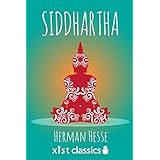
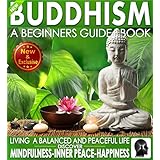
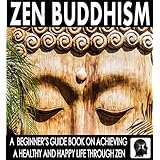


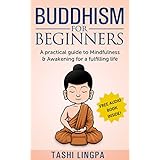
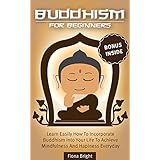
No comments:
Post a Comment